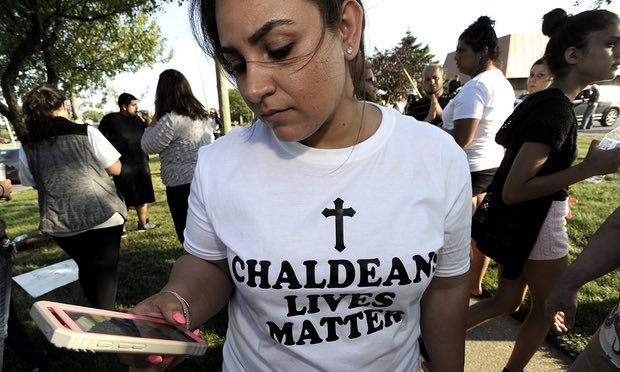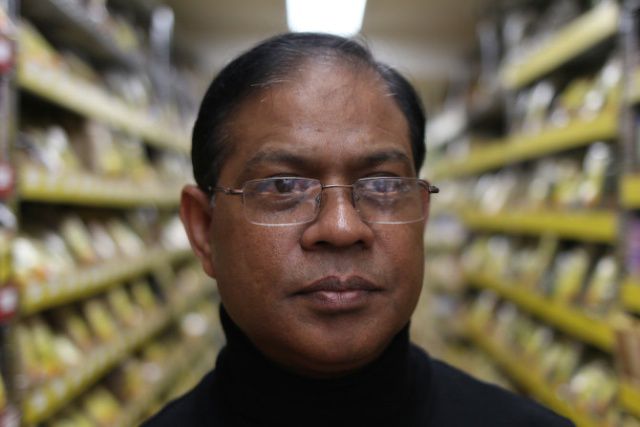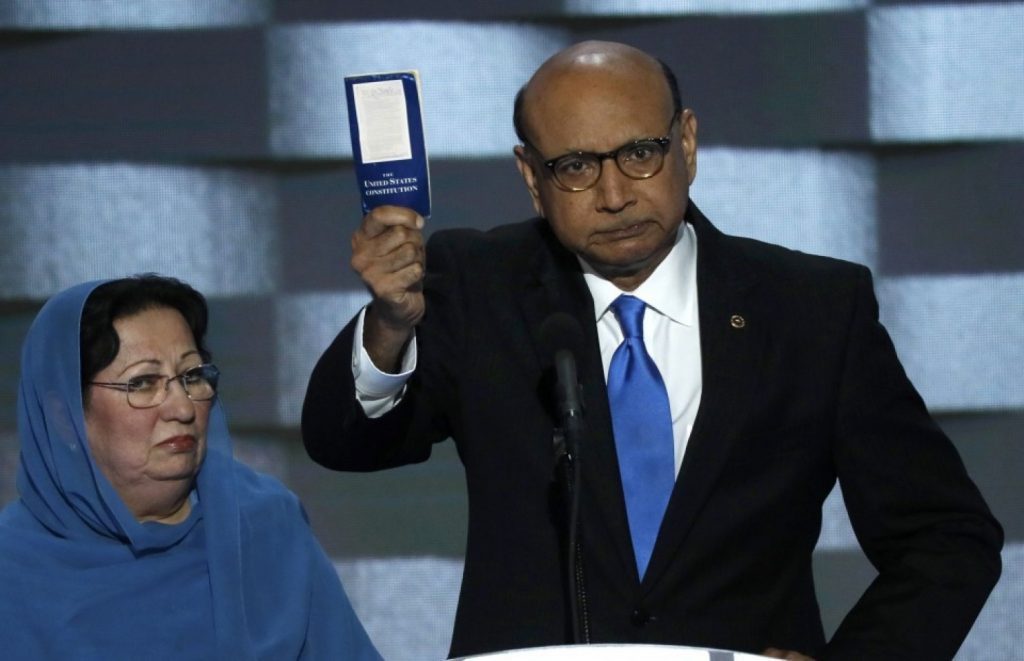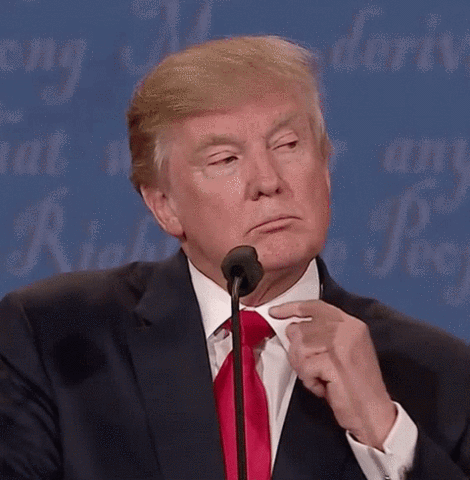Political Myth-Making and State Legitimacy
by GERALD SUSSMAN
First off, it is quite evident that the United States, which for years has been losing internal state legitimacy, is in crisis. (It’s already lost external state legitimacy, the Trump brand reportedly now distrusted by three-fourths of the world.) This means that a majority of American citizens no longer believe that the political and economic elites are working in the public interest. Once this happens, to cite Humpty Dumpty: “all the king’s horses [the police and military apparatuses] and all the king’s men [loyal state officials and publicity agents] couldn’t put Humpty [state legitimacy] together again.”
Short of implementing explicit police state controls over a rebellious public, which appears unnecessary in the present somatic corporate state, the ruling class must resort to intensified and unending propaganda (state and commercial). This is exactly what PR guru Edward Bernays had proposed in his book by that title in 1928. We’re well into that propaganda society, with continuous mass distraction and censorship of authentic alternative news sources – all directed toward maintaining a public order of complacency, spectatorship, and establishment-orchestrated political consensus.
The reasons for the loss of confidence in the Democrats in particular are painfully clear for millions of people, and there is overwhelming empirical evidence to support their mood of rejection, based on the failures of health care, education, and housing policies and the erosion of privacy protections. Obama’s half-hearted Affordable Care Act, while reducing the percentage of the uninsured from 14.6 percent in the first quarter of 2008 to 11 percent in the first quarter of 2016, according to Gallup, still left 28.6 million people without coverage. A third of all counties in the US are stuck with only one health insurance provider. Moreover, ACA allowed privately managed health care costs to skyrocket, as health insurance and pharmaceutical companies enjoy record profits and fatter than ever CEO compensation packages. Meanwhile, according to Money magazine, the average employer-provided family health insurance plan in 2008 cost $12,680, $3,354 borne by the insured, rising in 2016, respectively, to $18,142 and $5,277 – increases of 43% and 57%, with vastly higher deductibles.
Prescription drug prices have risen even higher. Over this 8-year period, average weekly wages rose just 3.4%. This means that the Obama administration did virtually nothing to contain costs, with workers absorbing the brunt of health care profiteering. Defenders of “Obamacare” say that it would have been even worse without ACA, as if the Democrats are not in bed with the health insurance and Pharma kingfish. Obama received $20 million from health care insurance companies in the 2008 presidential campaign. As of February 2016, Big Pharma had contributed $1 million spread over ten candidates in that year’s presidential campaign, Hillary Clinton receiving more than a third, well over twice as much as the second largest beneficiary, Jeb Bush.
Health care costs are crippling millions of Americans in more ways than one. Of the average 1 million personal bankruptcies of Americans filed over each of the past 5 years, 62% according to a Harvard University study, have resulted from medical expenses, hitting millions of people in households so affected. No one is bankrupted by medical costs in any other industrialized country, where citizens have single payer health coverage. In the US, the two parties’ disregard for the general well-being of the people is stunning, especially given the country’s enormous stores of wealth. It is clearly the case that neoliberalism, of which both parties have been enthusiastic supporters, including the recent Democratic Party presidential candidate, has broken down not just economic and regulatory barriers to big business aggrandizement but moral boundaries as well. The Democrats have plainly abandoned the working class. For Trump and the Republicans, the rhetorical strategy is “shut your mouth, Democrat hypocrites” – a pretext to strip to the max basic democratic and social protections.
Education costs likewise have ballooned. In-state tuitions at public universities rose 50% from 2008 to 2015, resulting in an imposed debt-bondage on millions of university graduates. Total student loan debt in the US as of early 2017 was $1.44 trillion, spread among 44.2 million Americans, larger than total credit card debt. The class of 2016 had an average of $37,172 in student loan obligations, 6% higher than the previous year. Even after graduation, university degrees provide most students with no long-term work security. About half of them will accept jobs that require no college education. The largest proportion are the “precariat,” an intermittent, underemployed workforce with low pay, limited if any benefits, low quality, no-ladder jobs, lack of security, and little likelihood of building a nest egg. The majority of jobs created since the Great Recession have been in this category.
Housing is another basic human right that increasingly is falling out of reach of a struggling middle class, with declining rates of ownership since its peak in 2004. Although the Obama administration achieved some cuts in homelessness, particularly among military veterans, one conservative estimate was that 1.5 million Americans lived in homeless shelters in 2014, with 580,000 more living on the streets, cars, and tents. The US Department of Education stated in 2016 that at least 1.3 million school-age children in the US were homeless. Neither Clinton nor Trump addressed this as a campaign issue in 2016.
Homelessless since 2008 has resulted in $20 trillion lost in household wealth. Trump appointed retired neurosurgeon Ben Carson as head of the Department of Housing and Urban Development, a person with absolutely no experience or qualifications in housing issues, reflecting the cynical disposition of the replacement regime toward this crisis. His appointment was backed by liberal stalwart, Elizabeth Warren, who perhaps was thinking another candidate could only be worse.
Recovery from the 2008 recession, the worst since the Great Depression, was slow. Republican leaders in control of Congress as of 2011 blocked policies to foster full employment, wage gains, and other conditions favorable to labor markets, including pro-union initiatives, while fiscal austerity at the federal and state levels radically reduced social protections for the working poor. Although the Obama administration helped to reduce the official unemployment rate by half from the 10% stated level in 2010, real wages were no higher in 2016 than they were 20 years earlier. Wealth and productivity gains continued to be taken by the top 1%, particularly the rentier class.
The failure of the Obama-backed Trans-Pacific Partnership to get congressional approval slowed down somewhat the negative impact on jobs and wages in the US. But it’s been the bi-partisan commitment to neoliberalism that has done the most damage. Under Markt über alles in der Welt doctrine, social spending austerity, and the growing financialization of the economy have had the profound effect of shrinking the American middle class, increasing rates of poverty, commodifying the public sector with pac-man intensity, and turning all vestiges of public services into profit centers.
Further erosions of democratic life have occurred in the realm of personal privacy and First Amendment rights. GW Bush’s Patriot Act was cited by the ACLU for its widespread abuses of privacy protections of Americans. Bush routinely used color-coded “terrorist” alerts to instill public fear, as his regime reworked the regulatory and tax structures in favor of his tycoon comrades. Obama didn’t resort so much to scare tactics, he just watched Americans far more closely, encouraging the National Security Agency to spy without warrants on millions of citizens’ phones, computers, and even cars and TV sets.
Trump has revived the fear tactics, working up the public into a mindset of hate against Muslims in our midst, but it was Obama who, according to the Christian Science Monitor, who passed on to him in 2017 enhanced surveillance capabilities, “dramatically expanding 17 government agencies’ legal authority to spy on US citizens.” And it was Obama, speaking at the National Defense University in 2013, who warned that “we face a real threat from radicalized individuals here in the United States,” the italics (added) of which can be construed as defining a broader spectrum of political dissidents than just alienated Muslims.
It was Obama’s CIA director, John Brennan, who first lied about and then admitted to spying on a Senate intelligence committee charged with CIA oversight and suppressing a Senate report on the CIA torture program and the agency’s coverup of the program. As an earlier GW Bush era CIA official, Brennan had actively supported the use of torture and “extraordinary rendition” (kidnapping) of terror suspects to secret torture sites around the world, including Guantanmo. These were the credentials with which Obama appointed him as head of the CIA. Obama’s director of national intelligence, James Clapper, collected telephone metadata on millions of Americans and lied about it to a Senate intelligence committee. Only after Edward Snowden blew the whistle on the NSA’s secret and illegal spy programs directed against American citizens did Clapper confess to his lies. In bureaucratic double-talk, he told NBC’s veteran news reporter, Andrea Mitchell, that in his deceptive responses to Senator Wyden, he was simply responding in the “least untruthful manner.” It is well documented that not a single terrorist act has been thwarted through government surveillance over citizens and its gross violations of the 4th Amendment. The corporate-controlled US mainstream media (MSM) chose to focus on Edward Snowden, whom they generally depicted as a traitor, rather than on Clapper’s lies and criminality.
The breakdown of confidence in the Democrats and the dissolution of working-class identity with the party has been spectacular, radically transforming American political culture. One immediate result of this has been the rise of Donald Trump, the least respected US presidential candidate and president in the postwar era, probably all-time, who won the 2016 election in a shocking upset over one of the similarly least liked opposing candidates over the same period. But it was not only the White House that the self-assured Democrats had lost. In 2009, the party held both houses of Congress and the White House, controlled 27 state legislatures (compared to just 14 for the Republicans) and have since lost all three federal governing institutions, most governorships, and 919 state legislative seats. Republicans now (mid-2017) control a record 33 governorships, with only 16 under Democrats and one independent, along with 67 (68%) of the 98 partisan state legislative branches in the country, the highest ever. Democrats are in charge of just 13.
Of the 32 Republican-controlled state legislatures, 24 have Republican governors. Democrats control both branches in just 7 states. In 2009, the Democrats held 52% of state senate and 57% of state house seats and 28 of 50 governorships across the country. Today, Republicans are firmly in control of all branches of government, including the US Supreme Court. A few more flips in state legislatures and the Republicans can rewrite the Constitution as they please.
In many, if not most democracies, such a devastating turn of events would automatically lead to the expulsion or voluntary withdrawal of the defeated party leadership. In Britain, for example, the failure of the ruling Conservative leadership under David Cameron to defeat the Brexit initiative induced him to step down as prime minister. The year before, Ed Miliband relinquished his post as Labour leader following his party’s defeat at the polls; resignations also followed for the leaders of other defeated parties, the Liberal Democrats and UKIP. Britain presently awaits the resignation of Theresa May, following the Tories major losses in the 2017 “snap” election. Yet, in the US, after the massive 2016 defeat, the dominant right wing section of the Democrats (the Clintonites) retained power and indeed doubled down, putting their loyalists back in control of the House and Senate minority leadership positions plus a neoliberal, Tom Perez, as the head of the Democratic National Committee (DNC), the party’s governing body.
The difference between the US and other market economies is quite striking. It’s as if the dominant political culture in the US brooks little necessity for expressing responsibility or shame for defeat. A failed political campaign is simply regarded as a public relations problem that needs better experts in public perception management. The MSM focused so little attention on the broad and startling evidence of Hillary Clinton’s corruption exposed by WikiLeaks that the Democrats felt little pressure to purge their ranks.
Rather than concede defeat, the Democrats collaborated with the “deep state,” the behind-the-scenes planners and eyes and ears of the neoliberal ruling class, to restore a degree of normalcy to the political process and to protect the country’s overseership of its foreign allies and client states. The “deep state” is an unelected and largely unaccountable power formation, akin to what President Eisenhower famously called the “military-industrial complex,” which is not a conspiracy so much as representing a coalition of long-standing state interests. Nowadays, the “deep state” could be said to include the leadership of the key intelligence and security organizations (both state as well as private outsourced services), along with the military and its defense and surveillance industry allies, the top banking and finance sectors, the Treasury Department, the oil and energy oligarchs, and zionist neocons and ideologues. These groups are all presently allied with the right-wing, hawkish faction in the Democratic Party and the anti-Trump neocon Republicans, including the latter’s party veterans, John McCain and Lindsey Graham. The journalist John Light notes that the “deep state” has earlier origins: “In the 1950s, the derin devlet [in Turkey] – literally, ‘deep state’ – began bumping off its enemies and seeking to confuse and scare the public through ‘false flag’ attacks and engineered riots. The network ultimately was responsible for thousands of deaths.” Was Trump’s aggression in Syria in April 2017 a reversal from his campaign pledge to work with Assad to defeat ISIS, and a reflection of the preponderant power of the “deep state” over the executive branch?
If Democrats want to understand why they are being beaten time and time again in federal and state elections, they have to consider that their neoliberal and militarist brand of politics no longer works for most Americans. But this orientation is difficult for Democrats to reverse, as their most dependable and powerful allies are not working people but the mainstream news media, the banking community, high tech industries, deep state intelligence organizations, the celebritariat, and key corporate and filthy-rich individual financial backers, all of which have vested interests in maintaining the present neoliberal global hegemonic warfare state.
In fact, both parties are no longer trusted. What are the indicators of the breakdown of state legitimacy? There is clearly a radically reduced confidence in government as a whole and in the MSM. The 2016 election didn’t have the lowest voter turnout in US postwar history, about 55% in 2016, according to CNN, which if accurate is a 20-year low, but in any event is considerably lower than almost any industrialized country in the world. Donald Trump received less than 26% of the eligible vote of the people; Clinton received slightly more than 26%. Neither demonstrated a popular mandate, as close to half, 45%, did not vote. Comparing US congressional elections with that of the Russian Duma (parliament), representing a country the US sets up at its anti-democratic antithesis, during a non-presidential (“off-year”) race, the US turnout in 2014 was 36%, while the Russian turnout in 2016 was 48%, a record low (65% in the 2012 presidential election) for that country.
Trust in the basic organs of democracy in the US is extremely low: in a Gallup survey, just 19% believe that government is doing the right thing always or most of the time; and only 32% have much or some trust in media (with only 6% saying they had a lot of confidence, according to an Associated Press poll in 2016). According to Gallup, this contrasted considerably with the same measures tested in Russia: trust in the Russian government was found to be 64% (2014), trust in Vladimir Putin’s leadership (2017) was 81% (88% immediately after Crimea rejoined Russia in 2014), and trust that media in their country has adequate freedom reached a record high of 55% in 2014. Confidence in state media coverage of Ukraine and Crimea (2014) was 76%.
How does this compare with that of the “democratic” country, the US claims, Russia has “invaded”? Public confidence in the Ukrainian government and media (end of 2016) was extremely low. The Kiev International Institute of Sociology found in its poll (undertaken only in the regions under its control, i.e., not the Russian-speaking Donbas region) that: “A total of 13.7% of respondents trust [President] Poroshenko while 69% do not,” 82% do not trust the Ukrainian parliament, and 76.3% do not trust the country’s national media (only 2.4% do). And despite the hostile US media coverage of Russia, on the eve of the Trump election, 56% of the American public, according to CNN, said “the US ought to continue its efforts to improve relations with Russia rather than take strong economic and diplomatic steps against Russia” – a signal that Trump was right to try to reestablish normal relations with that country.
At the outset of the 2016 campaign, the Clinton camp must have relished running against such an eccentric like Trump, whose support even within his own Republican Party, was shallow. But just as Brexit shocked the British nation and the rest of the world with an unexpected referendum vote to leave the European Union, which reflected the anger of British working class against neoliberalism and the compression on working class income and quality of life, so too did the Trump victory in November of that year. How did the Democratic Party, which supposedly represents working class interests, manage to lose the election in key downtrodden industrial states: Wisconsin, Pennsylvania, Ohio, and Michigan? And how were the US mainstream media implicated in this unexpected, and for perhaps billions of people around the world, shocking outcome? For one thing, the coverage of Trump far exceeded that of Clinton and Clinton’s coverage far exceeded that of Sanders, according to a study by the Harvard Shorenstein Center. This enabled a populist sentiment of “anti-establishment candidate” to be transferred from Sanders to Trump. The working classes of the ”rustbelt” states, especially white working class (male and female), simply did not trust Ms. Clinton to represent their interests and opted out of the Democratic Party.
The biggest problem facing America, according to a Gallup poll in February 2017, is “dissatisfaction with government.” Russian “interference” in US politics, even with the constant droning of the liberal media, does not show up as a concern of most Americans based on this survey (a mere 1% cited the “situation with Russia” as worrisome). What is to be made, therefore, of the Democrats’ and MSM obsession with Russia? For the Democrats, it’s mere scapegoating for their massive political defeat. John Bonifield, a CNN producer, was secretly filmed in a sting video, called Project Veritas, in June 2017, in which he admitted that his station kept promoting Russia hysteria simply for ratings while ignoring more important stories, such as climate change, out of overarching concern for maximizing audience share, which is quite low compared to network news. Describing the Russian coverage as “mostly bullshit right now,” Bonifield also offered the estimation that “we [CNN] don’t have any big giant proof” of Russian interference in US politics and that most of his colleagues share his cynicism about the station’s news reporting. Indeed, one his CNN colleagues, liberal pundit Van Jones, was also secretly filmed and referred to the Russia coverage as “a big nothing burger.” This demonstrates that station management, not the reporters or pundits, calls the shots on what’s considered newsworthy and that the amount of coverage bears no relationship to truth-seeking or importance to the country.
Stunned Clinton supporters are unable to see through the miasma the MSM barons have created for them to hide the failures of her candidacy and the party, because they refuse to see how someone as vulgar as Trump could have defeated their standard bearer of identity politics. If the Democrats have any hope of recovery, they would need to embark on a path that radically differentiates them from the far-right Republicans, i.e., offer a genuinely progressive alternative. This calls for party purges of the likes of neoliberals and Wall Street hacks like Pelosi and Schumer, and their substitution by a leadership that seeks an end to Clinton and Obama era job-crushing “free trade” and warmongering foreign policy. Julian Assange has commented that the establishment wing of the party is blaming the Russians for its devastating defeat precisely to protect itself from the challenges demanded by the Sanders movement.
Winning back voters and recapturing moral authority requires a commitment to a popular and democratic socialist agenda of:
* medicare for all
* free university education
* affordable housing and the elimination of homelessness
* universal privacy protection
* nationalization of banking and finance and other strategic industries
* justice for workers and unions in the US and abroad, including living wages and decent jobs
* environmental cleanup and alternative energy source development now
* far higher (Eisenhower era) tax rates for multi-millionaires and billionaires
* ending of racist policing and profiling
* rejecting war as an instrument of settling international disputes
Otherwise, it’s Humpty Dumpty time, and the far right is here to stay.
Gerald Sussman is professor of urban studies and international and global studies at Portland State University. He is the author of Branding Democracy: US Regime Change in Post-Soviet Eastern Europe.
Courtesy: CP
(Published 2017/07/06 at 3:40 am)



















Comments